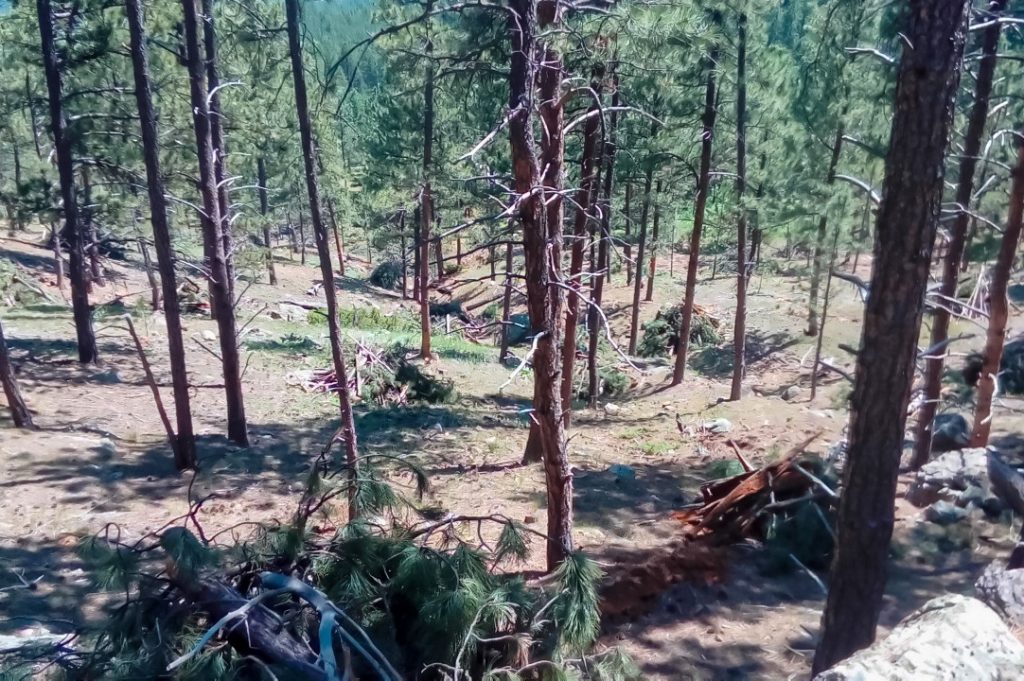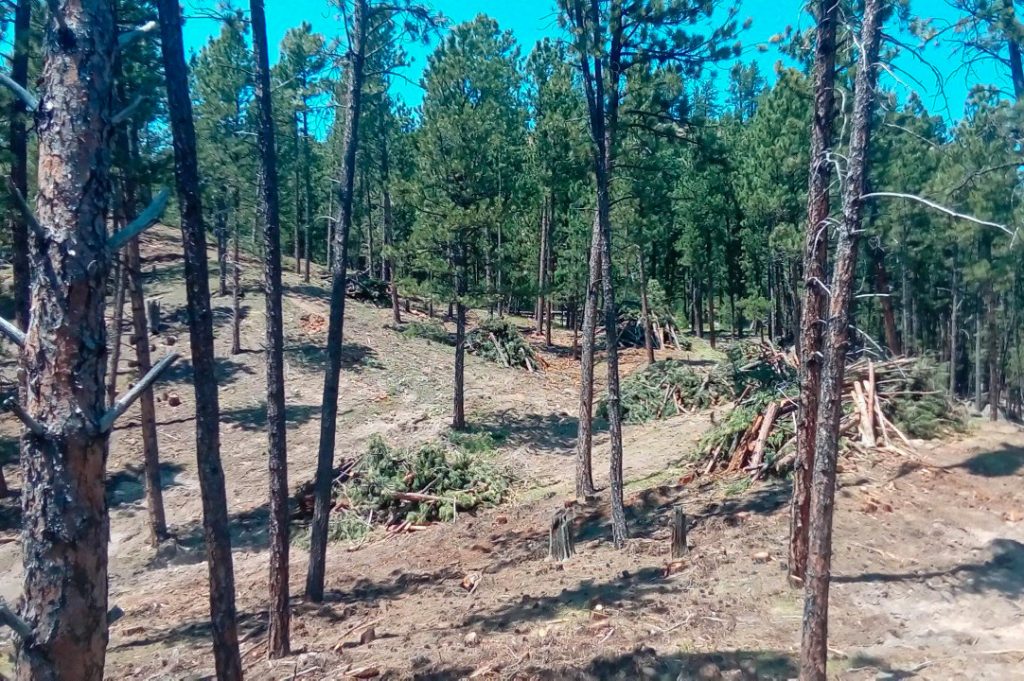Assisting Private Landowners, Enhancing Wildlife Habitat and Making Communities Safer
NWTF’s Wyoming Cooperative Forester Austin Somerville coordinated with neighboring small-acreage landowners to design a 30-acre fuel break near Newcastle, Wyoming.
“Three neighboring small-acreage landowners wanted to improve aesthetics and protect their property from wildfire,” Sommerville said. “They lived on neighboring 10-acre lots and hoped to save money on contract labor by doing the work at the same time, as opposed to hiring individual contractors to come out for small projects.”
As the cooperative forester for Weston County Natural Resource District, Sommerville worked with the Weston County Fire Protection District to plan a project to treat all 30 acres within the landowners’ budget.

This type of forest management activity Sommerville orchestrated works to prevent potential wildfires spreading into the neighboring forest that provides foraging habitat for wild turkeys and white-tailed deer. This project was funded with a combination of landowner contributions, Weston County Wildfire Mitigation funds and Weston County Natural Resource District Forest Health funds.
The fuels reduction work included removing all heavy fuels within 30 feet of homes and buildings; thinning trees to 10-foot crown spacing, out to 200 feet from buildings; thinning trees to a density of 300 trees per acre, beyond 200 feet; and treating woody residue.
Both the Weston County Timber Stand Improvement Program and the program offered by the WCFPD impact landscape-level forest health; however, while both programs were utilized, the former was a costlier option with more in-depth specifications, while the latter was more economical for this particular project.

“We utilized both programs to treat these properties but limited the acres treated to the expensive WCTSIP specifications to the areas around their houses, and we used the WCFPD funds in the larger areas farthest from the houses,” Sommerville said. “We ended up with three different zones of varying tree densities. We created 1-acre defensible space zones around each house, then a 3-acre moderate fuel reduction zone beyond that. The rest of the property was treated with the less stringent (less expensive) specs used by WCNRD. Cost ranged from $400 to $1,100 per acre, but most of it was cost-shared by either WCNRD or WCFPD.”
Weston County Fire Protection District administers the Weston County Fuel Mitigation Program. That program is also funded by a grant from Wyoming State Forestry Division.
